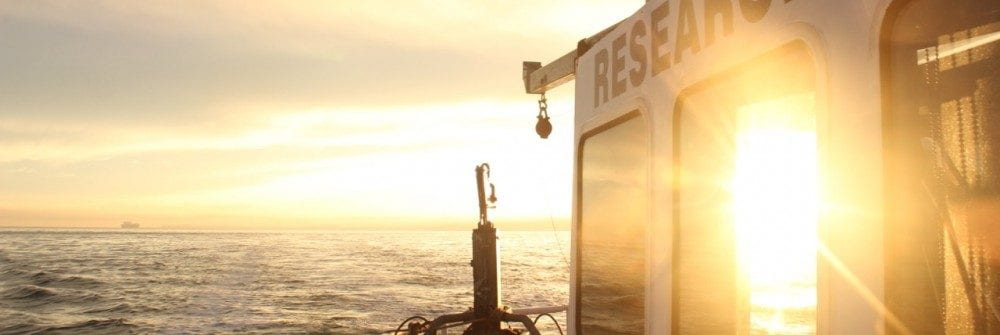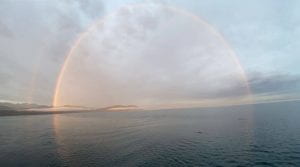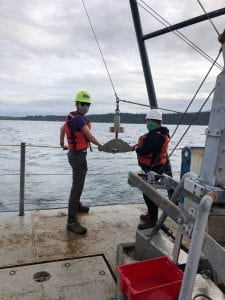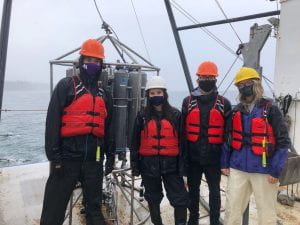The Marine Sedimentary Processes Research Apprenticeship headed back to the Elwha River last week. In this class, students develop their own research questions related to the Elwha dam removal project, collect data, and write a thesis paper all in one quarter! Phew! This year students are focusing on the interactions between sediment transport and biological communities in the coastal area close to the river. We have the opportunity now, 5 years after dam removal, to now examine the system as it approaches a new equilibrium.
We went on two separate research cruises with 4 students each time (for COVID safety) on the School of Oceanography’s R/V Rachel Carson. The first cruise had spectacularly great weather. Students collected benthic grab samples, CTD profiles of the water column, and collected box cores. The second cruise was a bit choppier! We hit some large waves and had to adapt our sampling plan rapidly. But the students still hung in there and collected amazing data. We even managed to sneak in a quick box core despite the weather.
Over the next few weeks we will focus on processing all this data and analyzing the results. Stay tuned to hear more about the class and their results this fall.




























